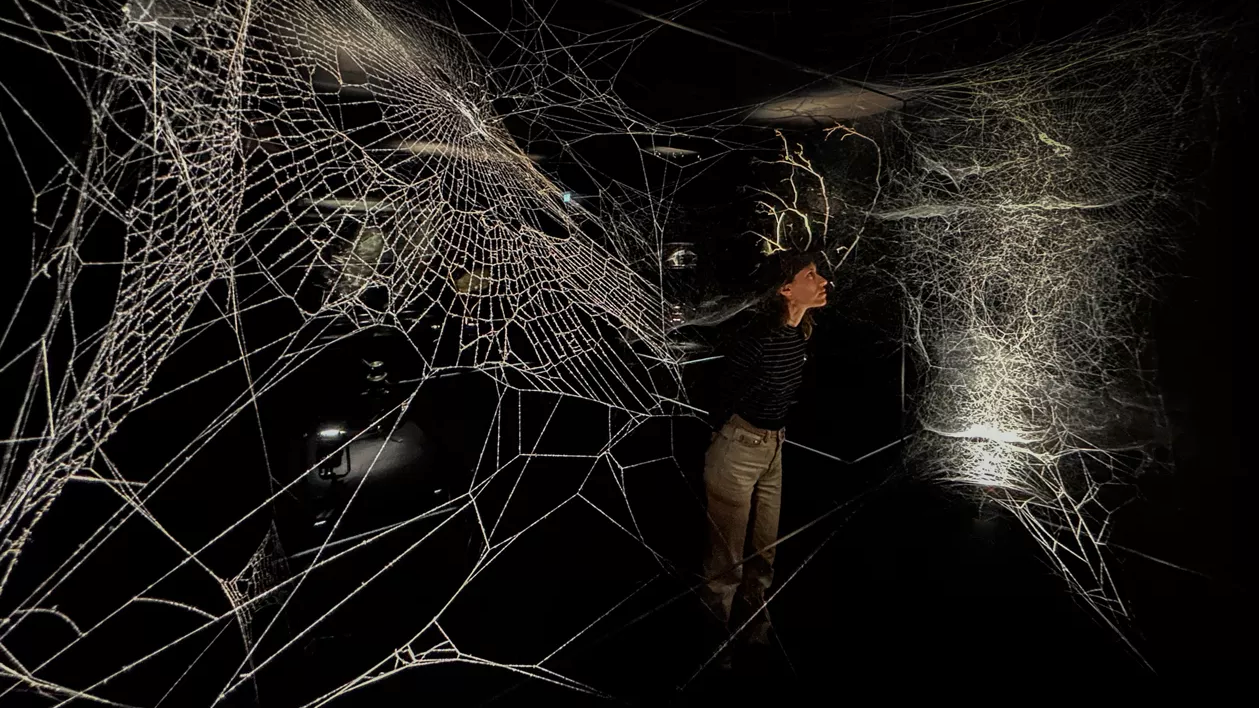Tomás Saraceno In Collaboration: Web(s) of Life (Capsule Review)


[Original publication: No Proscenium, 7/25/23]
The worlds of art and design are rife with collaborations. Tomás Saraceno In Collaboration: Web(s) of Life is different.
This one is with spiders.
A continuation of Saraceno’s body of work, Web(s) of Life is extraordinary. Urgent, universal messaging about our climate crisis is interwoven with aesthetic cohesion and practical effect. Through explicit and subtle methods, the show elicits keen awareness of our interconnectedness.
Get Laura Hess’s stories in your inbox
Join Medium for free to get updates from this writer.
SubscribeSubscribe
Its entrance is stark, the vague echo of an 18th-century apothecary. Preserved under glass is printed literature about lithium extraction in Argentina and its devastating effects on clean, accessible water for Indigenous communities. Visitors are greeted with the choice to surrender their mobile phones (the batteries of which are a key driver of lithium mining) as a gestural acknowledgement and a commitment to presence.
From there audiences move through three indoor galleries, two of which contain video installations. One video depicts an aerosolar balloon sculpture. A vehicle for advocacy, it was the first fossil-free human flight and the most sustainable flight in human history as certified by the Fédération Aéronautique Internationale. The other video is of Cameroonian spider diviners and includes an invitation to ask the spiders a question.
The show’s most captivating work is by the spiders themselves. Geometric intricacies of illuminated webs are on full display. The silks’ silver-to-gold gradient is stunning — and natural; docents confirmed the webs were “unedited” (other than a local spider’s recent contribution to one of the sculptures). Some webs were housed in plexiglass while others were unenclosed, swaying from the displaced air of visitors. Despite their fragility and impermanence, they felt vast and cosmic (even mirroring a recent image from the James Webb Space Telescope). A stained-glass “arachnid confessional” was a surprise. The webs’ substitution for a priest felt appropriate, comforting.
Not only does the show spotlight our climate crisis, the exhibition itself is responsive to this existential threat. Newly installed solar panels are the sole supplier of power and the gallery’s climate control system has been shut off. Instead, doorways are open to allow for natural ventilation (and “the free movement of humans, animals, [and] insects”). Cloudy weather or temperature spikes directly impact which lights remain on and which galleries stay open (Ballad of Weather Dependency). While some critics dissent (“It all just feels a bit Spinal Tap”), there is no resonance — and certainly no behavioral shift — without real consequence. The sense of entitlement that everything we want should be immediately and forever available is precisely how we arrived at this event horizon.
A fascinating and singular co-creation, Web(s) of Life is a stunningly holistic interpretation; it’s an artistic embodiment of our modern ecosystems and an ultimate metropolis for the future.
Note: The exhibition is responsive to weather conditions, on days of high temperature the gallery may close. Please check here for more information.